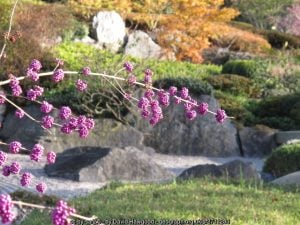Get ready for next spring in the garden – yes, really!
If you’ve been enjoying flowers in your garden recently then now is the time to make sure you have another good display next spring. Commiserations if you haven’t had a good display but a few preparations now will improve matters next spring.
- Split or plant some snowdrops and/or winter aconites.
- Prune winter-flowering shrubs that have finished flowering. Not all shrubs need pruning every year but some will benefit enormously.
Divide and multiply - snowdrops and aconites
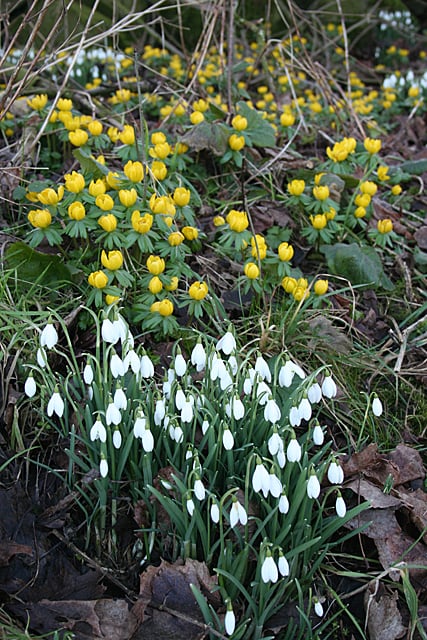
Aconites and snowdrops near King Edward, Aberdeenshire. © Anne Burgess and licensed for reuse under CC BY 2.0.
If snowdrops like your garden they will multiply happily. It’s a straightforward matter to divide large clumps at this time of year to encourage them to grow into a wonderful spring carpet of white and green. Doing this now when the foliage is still green means you can see what you’re doing and many authorities say that dividing ‘in the green’ is the best time. If you forget, though, it’s OK to do it later on but mark where the clumps are now. Other authorities say dividing later is the best time …
For people with chalky and/or well-drained soil, you can do the same with the buttery winter aconites. As Noel Kingsbury says they
beam a golden glow into the garden.
I’d like them to do this in my garden but I’m still trying to find a space. As for so many of us, my garden is a work in progress!
Still time to cut back the glorious dogwood
I’m very fond of the dogwood, the woody shrub which has such beautiful and colourful stems in the wintertime. Large swathes of red, lime green and yellow bark are a striking sight and very welcome on dark days. It’s too big for my garden (I think – or can I find a space?) but I am enjoying the roadside plantings at a roundabout on one of my regular journeys. Many thanks to the landscape architect who drew up that planting plan!
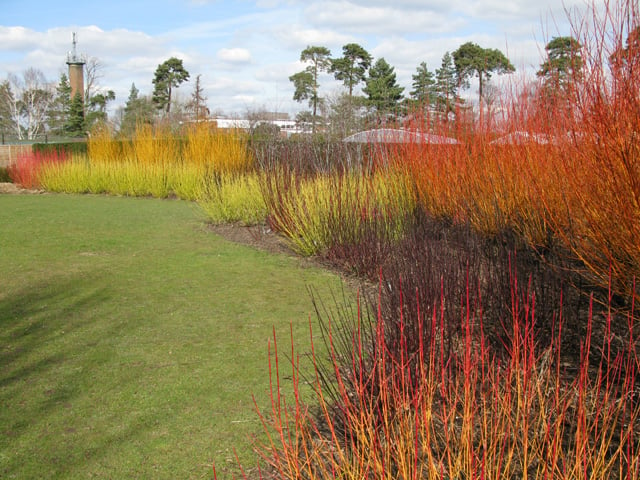
This fantastic display of colour comes from various dogwood species (Cornus), at Broadview Gardens, part of Hadlow College. © Nick Smith and reused under Creative Commons CC BY-SA 2.0 Licence.
Starry yellow winter-flowering jasmine again next spring
Winter-flowering jasmine (Jasminum nudiflorum) is a climber and another reliable plant in dark days. Prune it once the bright yellow starry flowers have faded (from February onwards, depending where you are in the country) to neaten the plant and improve flowering next winter. You’ll be so pleased you did this when the bright flowers welcome you on dark days and their fragrance catches you unawares on warmer days.
The Royal Horticultural Society recommends us to:
- remove any dead or damaged shoots
- tie in new shoots to the main framework
- shorten all the laterals coming off the main framework to 5cm (2in), cutting back to a bud
- feed and mulch after pruning, as the plant will put on lots of growth in response to being cut back.
Perhaps you’ve got a viburnum in your garden
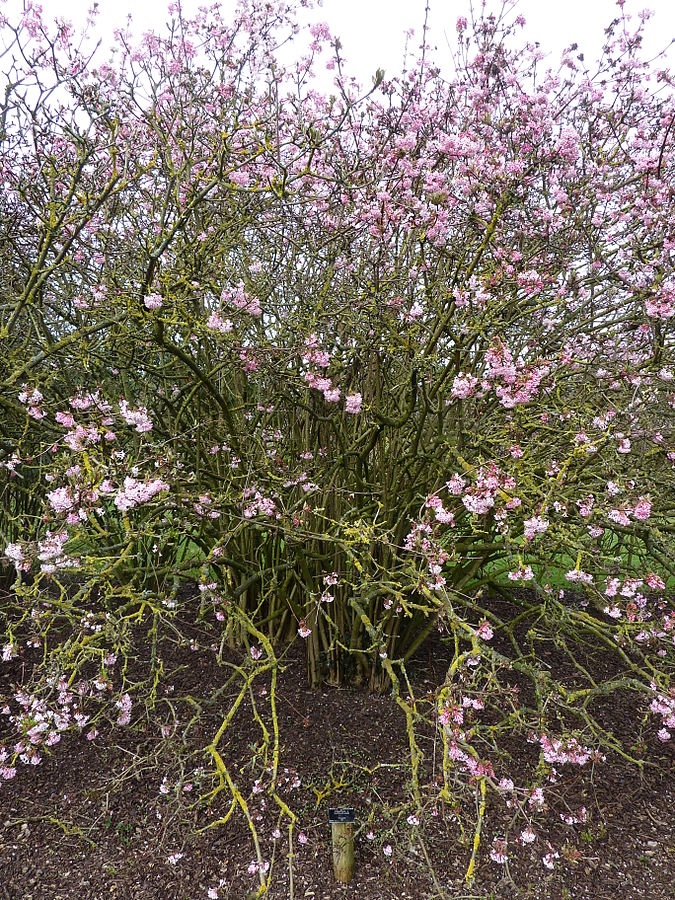
Viburnum x bodnantense 'Dawn' has grown into a large shrub in the Cambridge University Botanic Garden. © Magnus Manske and licensed for reuse with https://creativecommons.org/licenses/by-sa/3.0/
Viburnum x bodnantense 'Dawn' is a hybrid, crossed in 1935 at Bodnant Garden in North Wales – hence its name. It’s an easy shrub to grow and you’ll find it in many gardens. Many tightly packed 7.5cm (3in) clusters of rose, pink or blush white blooms with a very sweet scent appear in winter, long before the foliage appears. In cold gardens it flowers from January to March but in mild winters it can flower from October to March with a short break.
‘Dawn’ has strongly scented pink flowers and is one of the most popular viburnums. It has an RHS Award of Garden Merit (AGM). ‘Dawn’ is a large shrub (3m in height x 2m spread) which, when established, needs hard pruning to keep it tidy and vigorous. As soon as it has finished flowering cut one in four, or one in five, of the old stems to ground level, working through the plant each year until it has all been pruned.
Viburnums range far beyond 'Dawn' as Mary Keen outlines and winter is probably their best time of the year.
Give winter-flowering heather a haircut for next spring
Heathers are reliable and easy plants for a dash of colour but they can become rather leggy and bare. Keep them in shape by giving them a trim as the flowers fade. Get out your shears, give them a quick sharpen and the haircut will be done before you can say:
a bit shorter on the top, please!
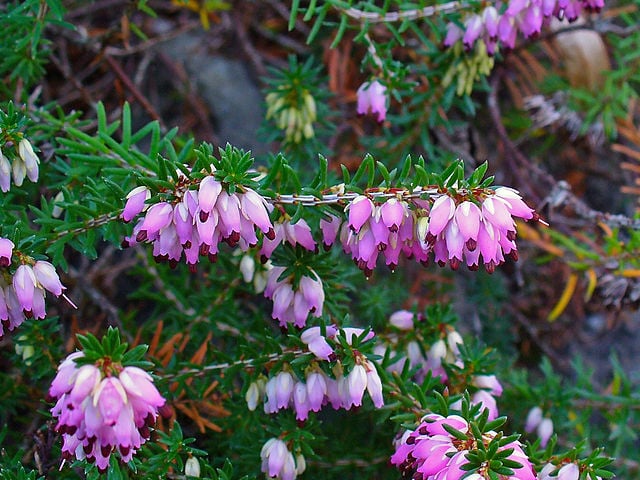
Erica carnea, winter-flowering heather, in Karlsruhe Botanical Garden, Germany. © H. Zell and licensed for reuse under https://creativecommons.org/licenses/by-sa/3.0
Thinking and planning?
Have we got you in the mood to think and plan more flowers and shrubs to brighten next spring?
Sign up for our emails below, so we can send you blogs on gardening tips, as well as updates on our sales, so you don’t miss out on those garden furniture bargains!






